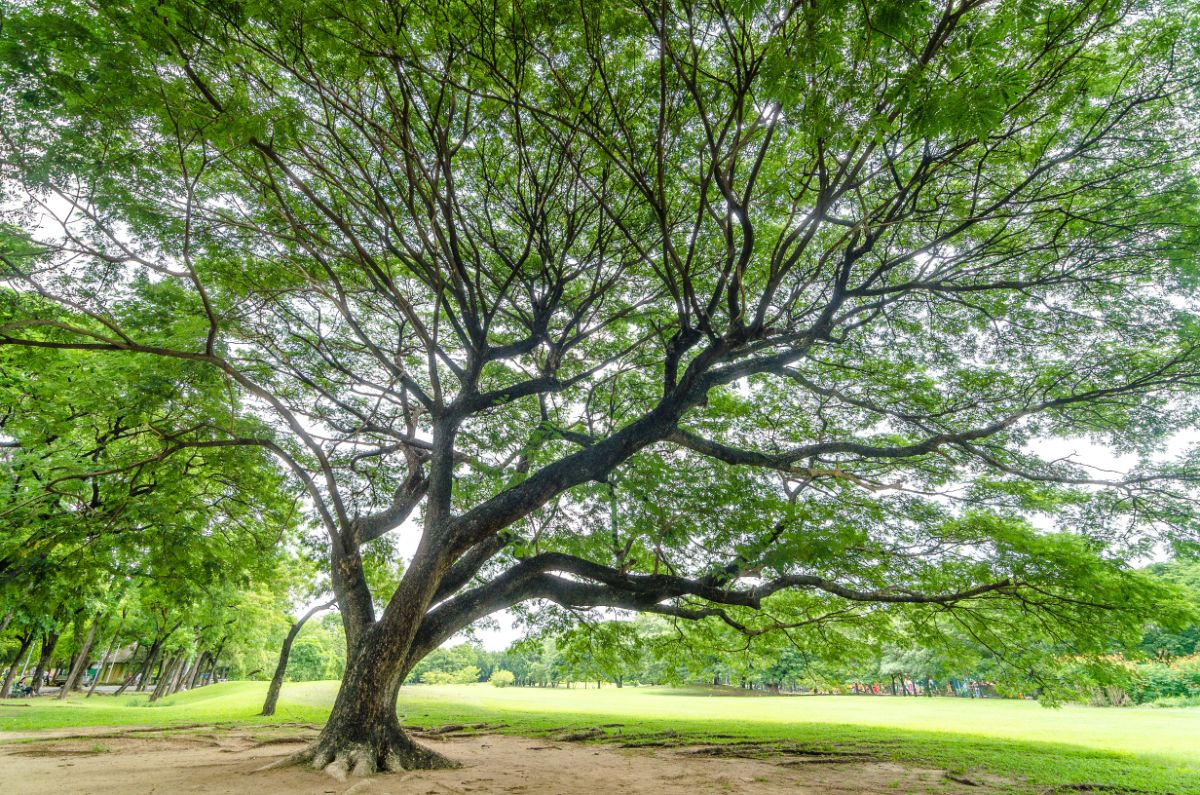Trimming your trees is key to keeping them healthy, happy, and beautiful all year round! It helps remove dead wood that saps your tree’s energy reserves, improves air and nutrient circulation, and keeps it a more manageable size. But when is the best time of year to trim a regional tree? The expert team at Red’s Tree Service is here to help by sharing the best times and techniques for trimming trees across the Mid-South.
When should I trim my regional trees?
The Mid-South is known for its lush green canopy of native trees, bushes, and shrubs that flourish during the summer months. As fall and winter approach, temperatures drop, the greenery fades, and trimming season looms! Most trees in the Mid-South will respond best when trimmed in late winter.
Tennessee and the Mid-South are zone 7 areas, meaning that the first frost will happen around November 15 and the last one about April 15. Within this rough date range, most plants will enter a period of dormancy and pause their growth so they can weather the cold. If you prune during their active growing seasons, trees might not be able to fully heal their wounds before the cold forces them into hibernation; pruning in late winter gives trees the chance to start healing as soon as seasons change.
During their dormancy, and throughout winter, most trees do not have leaves, which helps expose problematic issues such as crossing branches or problematic growth problems. You’ll be able to get at these problem areas easier, too, without branches or leaves getting in your way.
All species of trees in the Mid-South will generally respond well to tree trimming during the winter, but trimming during the spring and summer may in some cases be appropriate. Although the sap is rising in the tree during this time period, trimming during early spring allows for easy identification of problematic branches before the tree has fully leafed out. Additionally, for tree species that flower in mid to late summer, early spring trimming is a great way to encourage the tree to produce more flower buds on the remaining branches.
Trimming your trees in the winter also encourages new growth in the spring, but note that it’s best to do it after the coldest part of the season to avoid leaving the tree vulnerable to extreme cold snaps.
Best practices for keeping your trees trimmed and healthy

Now that we’ve established when to trim your trees, let’s take a look at some best practices for doing so!
First, get rid of anything that could cause damage to your property or others. Homeowners should regularly inspect their trees for potentially hazardous developments, including hanging dead limbs or sagging branches. These branches could fall and damage cars, houses, or other limbs, and it’s best to contact a qualified arborist like Red’s Tree Service to remove them as quickly as possible. By taking good care and working with a professional tree management service, you can extend the life of the tree and protect your property.
Sometimes, dead limbs and problem areas can be identified by evaluating the color of the leaves. If leaves on a specific limb are brown, dry, or dead, that’s a good indication that that limb should be removed. Whenever possible, take preventive measures to anticipate the failure of a healthy tree.
Keeping an eye on how your trees are growing is a great way to head off problems before they develop. Watching for crossed or rubbing branches, false crowns, drooping limbs, and so on will give you a good idea of when pruning is necessary.
Finally, consider the species of the tree you’re pruning. Different species will best respond differently to trimming at different times and with different techniques. For example, flowering and fruiting trees are best pruned in winter, so they’ll be primed to start healing as the seasons change. Trimming these trees at the wrong time can compromise their flower and fruit growth, and can cause irregular or unappealing growth later on.
Consult the experts
Don’t put your property, your trees, or yourself at risk. If a pruning is beyond what you feel comfortable attempting, call in our experienced team at Red’s Tree Services. Using a licensed tree service professional like Red’s will ensure a correct pruning and trimming job will be done. This will help create and maintain strong tree structures that will look beautiful and prevent any safety hazards.
Certain species of trees require more precise timing and different approaches for proper pruning and trimming. Having an experienced arborist on hand will not only keep you and your trees safe, but will produce the best possible results. Whether you’re looking for guidance on DIY tree trimming, or a quote on professional assistance with winter pruning, get in touch with us today! Red’s Tree Services are always here to help keep your property safe and your trees healthy.
